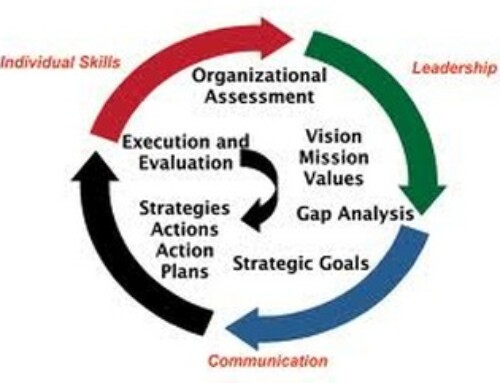 We recently received an interesting white paper/article from the CEO of the CTMLS, Cameron Paine, on the rationale for creating a national MLS consumer website. Cameron raises some very interesting ideas in his paper which you can read in its entirety on this post. This article highlights something WAV Group brings up at every strategic planning meeting and every conference we attend…we spend too much time in our industry working against each rather than cooperating. Separate agendas are being pushed at every level from national to state to local. There is an urgent need for our industry to work together to leverage our collective strengths. The proposal presented in Cameron’s paper is a step in this direction.
We recently received an interesting white paper/article from the CEO of the CTMLS, Cameron Paine, on the rationale for creating a national MLS consumer website. Cameron raises some very interesting ideas in his paper which you can read in its entirety on this post. This article highlights something WAV Group brings up at every strategic planning meeting and every conference we attend…we spend too much time in our industry working against each rather than cooperating. Separate agendas are being pushed at every level from national to state to local. There is an urgent need for our industry to work together to leverage our collective strengths. The proposal presented in Cameron’s paper is a step in this direction.
Here are some of the highlights from the paper:
- Zillow has received funding of around $87 million yet is not profitable. What is their real end game? Is it the MLS subscription business?
- Could Zillow or some other 3rd party become the site where listings originate instead of MLS? Why might large real estate companies consider this?
- Why individual MLS consumer sites can’t win the long term war
- A call for MLSs to come together and leverage their combined strengths with a national MLS consumer site
We Need One MLS Website
By: Cameron M. Paine, CEO, Connecticut MLS
Forward
The purpose of this white paper is to raise awareness that the MLS industry needs one national MLS public website to be competitive online. While there has been some debate over the years, the evidence supporting the benefits of MLS public websites has become overwhelming for even the most hardened skeptics. Still, there are flaws in both the idea and the execution by MLSs (including mine) that limit the potential of MLS public websites to truly compete – and win – in the search engines of Google, Yahoo, Bing, etc.
However, when considering this issue one question kept coming up: “Why would banks continue to invest millions into Zillow when Zillow has yet to turn a profit?” According to Zillow, by August of 2007 they had $87 million in funding. According to CNN Money, in the IPO earlier this year Zillow sold 3.46 million shares – trading today (October 26, 2011) at $25.59. Here comes the interesting part: Again, according to CNN Money, the underwriters of the IPO were Citigroup, Allen & Co., Pacific Crest Securities, ThinkEquity and First Washington Corp. The answer may be that the bank’s interest isn’t just in the public website – it’s the MLS subscription model. Remember, we’re 800+ MLSs, with no real capacity or leadership to mount a coordinated response to a common threat. Yet, with more than 1 million subscribers nationwide paying a monthly/bi-annual/annual fee of Don’t think for one second that the wealth potential has been missed by Wall Street; for anyone who thinks a national MLS is too big to work consider the fact that several non-broker/non-MLS national sites already accept direct listing entry. If I were them, I’d cut a deal with the large parent corporations that own many of the top nationwide brands to “reverse the stream” by mandating listing entry directly into the national site then passing data downstream to the MLS. It makes the broker/agent life easier because they have one listing entry regardless of how many MLSs they might belong to. Brokers, in turn, save time and money by having one common data feed for their national brokerage websites. The fact is that national sites already have as much or more information than many MLSs and my guess is that the national site(s) would provide some sort of profit sharing or subscription fee split with participating brokers. Ultimately, the only question remaining for brokers and agents will be, “Why do we pay for an MLS?” Article The most obvious flaw in the MLS public website presence online is that with more than 800 MLSs (probably half of which have public websites) we are too diffuse to have any real impact on the national scale. Think 800+ people in a gigantic war canoe all paddling in different directions and you will have some idea of our industry’s online effectiveness. There are a few notable exceptions like the Houston Association’s HAR.com, but they have local success because they were early to market and were funded aggressively. HAR was able to establish dominance before the entry of Zillow, Trulia, Yahoo, etc., into their market and has done a good job of maintaining local dominance. For MLSs not in HAR’s position, it’s an uphill climb against well established, very well-funded competition. We are the source of the data, the most accurate real estate information on the planet. Why aren’t we winning? We need to stop paddling in different directions and take concrete steps towards improved cooperation within our industry. Consolidation is part of the answer, but I think cooperation needs to come first. We need to take a hard look at our future and realize that while we’re arguing, the competition has been eating our lunch. Think about the vast amounts of collective money being spent by every MLS that built and now maintains their own individual MLS public websites. There are 800+ MLSs, maybe 400 of which have public websites. Let’s say the public websites average $10,000 a year in expenses, that’s a total of $4 million a year being spent on 400 different MLS public websites. What if we were instead spending $4 million a year to convince the public to visit one MLS public website that we all share? When you Google “CT homes for sale,” 6 of the top 10 organic search results are non-broker or MLS websites. Assuming that most users never look past the first page of search results, it is clear that non-brokerage/non-MLS companies control fully 60% of the lead traffic in Connecticut. To anticipate the follow-up question, yes, Google searches for specific towns have similar results; I will bet you that your town’s search result is the same. The Connecticut MLS recently completed a total redesign of our website www.CTreal.com. We’ve done some very cool things and we did them for less than $40,000, which is pretty inexpensive. I am extremely proud of what we have accomplished, but I would trade it in a heartbeat to be more competitive with the non-MLS/non-broker sites currently dominating our market – I hope that every MLS would be eager to do the same. The point is simple: Separately, MLSs don’t have enough resources to compete successfully with the Zillows, Trulias, or Realtor.coms of the world. How can we possibly compete…? The way we’re doing things today, we can’t. We can continue to tread water, cheering our few success stories as shining examples of what could have been done – if we had been as smart, as convincing, and as early to the market as Bob Hale. Sadly, it is just a matter of time before even those limited successes will be swamped by the sheer quantity of money available to non-MLS/non-brokerage sites. I propose the creation of a single national MLS public website that participating MLSs would fund instead of their own individual sites (alternatively, the few MLSs that DO dominate their market area could do both, with the cost for participation in the national MLS site at a reasonably affordable $10,000). The combined resources would go much further and the combined traffic would significantly benefit organic search results. CTreal.com earns around 20,000 visitors per month, so assuming the 400 other MLS public sites average out about the same (some are better, some are worse), we’re talking about 8 million visitors per month. Now that’s a number we should be able to get behind. There are many details that need to be addressed, specifically: Who controls the site, how much would it cost to participate, how would it accept data, what would it be called, the web address, and many more. I have opinions on some and have a rough outline prepared, but it’s the “big idea” the MLSs need to sort out first, before getting in the weeds. The best organization suited to begin this discussion may be the Council of MLSs – but only if they can overcome the tired, old-guard impulse to try and crush anything that isn’t the status quo. Otherwise, we will find that while we’ve been arguing about whether or not we should start talking, the decision will have been made for us.





This is good food for thought.
I believe this is a valid approach, but I would suggest that a network of local or regional sites could also work – either with a “home page” that linked them together or as subdomains of a single site (i.e. CT.mlscloud.com) . This would work IF the site had integrated data on at least a market-wide level and perhaps if some user interface guidelines and other best practices were adopted by MLSs.
I also think the point in the forward about “reversing the stream” is problematic – MLSs are not just a database of listings, they are companies that field a wide variety of technologies and provide extensive services. Why would MLSs want to take bad data from a national advertising portal, and do you think professionals would put up with that bad data? Reversing the stream is not just a matter of adding a few fields to the national ad portal.
Matt,
Regional would be better than individual but to be honest I like the idea of national. Size does matter after all!
Regarding the “reversing the stream” comments Cameron makes I also have questions whether this would/could happen for some of the same reasons you note. Would they really turn the keys over to a 3rd party? Not sure, but many large brokers aren’t crazy about MLSs either and often see them as the competitor. Regardless, I think it makes us question together what the real end game is for these 3rd party sites cause their current model isn’t going to cut it. It will morph again.
Matt has a point with a network of local or regional sites, but that doesn’t go far enough. Sub-domains would work, but they’re sort of old school. A national consumer site could be done with one database and one codebase with data pulled (or pushed) from participating MLSs. Access to the data could be through individual portals (a portal for each MLS, if desired) AND through a full database search capability. The portals would give the MLSs a level of autonomy in providing information outside the database that is unique to their situation, and the top level search would give a user the ability to search the entire database in one operation — drill-down or search-all — your choice.
I know that such a system can be built because we’ve already done it.